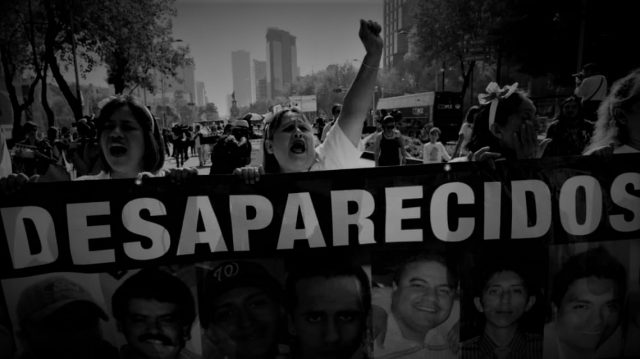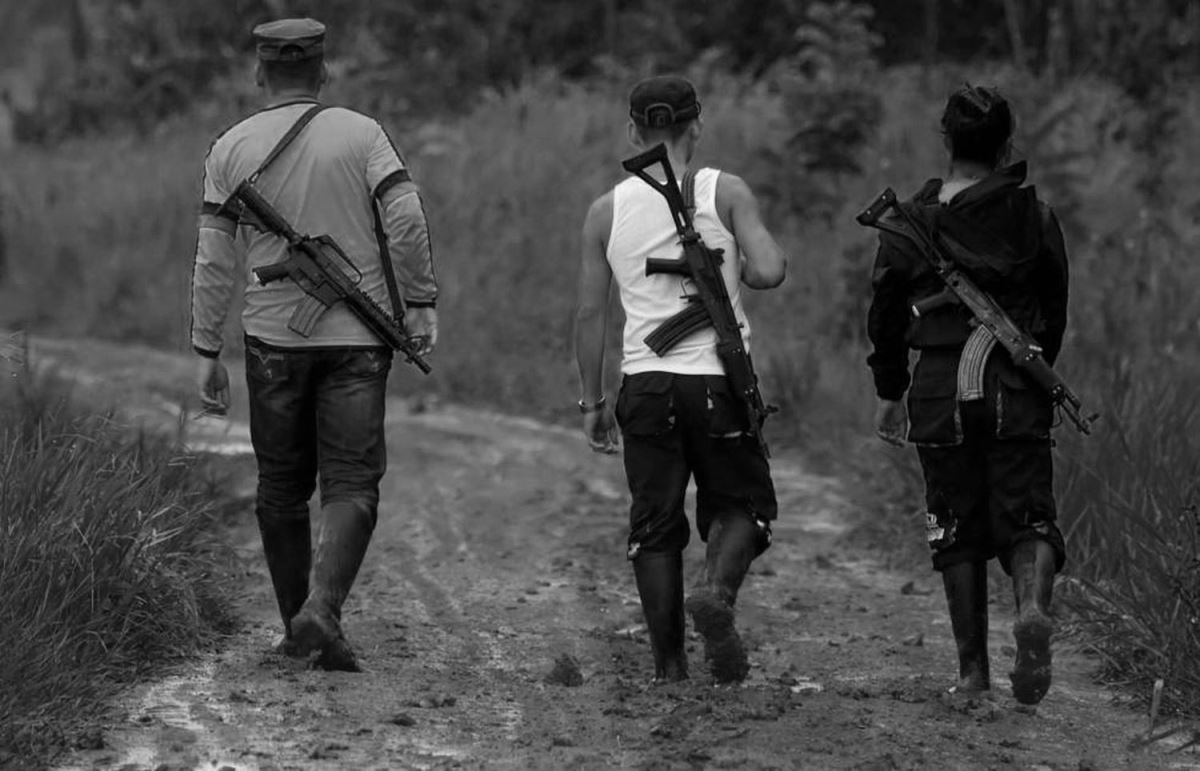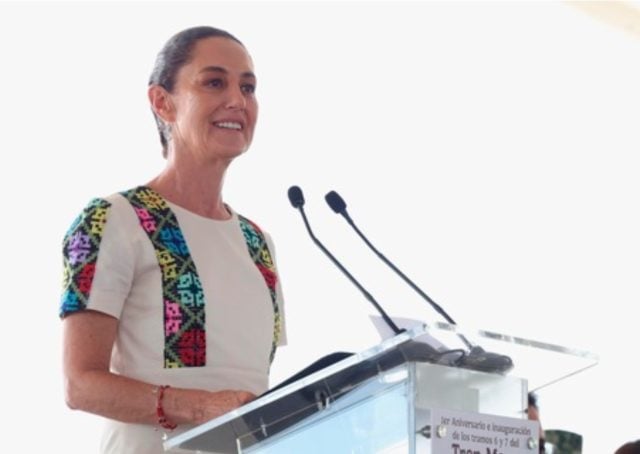The regrettable cases of disappearances in Mexico continue to be alarming, with an annual record that exceeds at least 4,000 victims. These types of crimes against humanity are registered throughout the country and have worsened since former President Felipe Calderón declared «the war against drug trafficking» in 2006.
Until 2020, the number of disappeared or people ‘that have not been located’, a record that has been counted since 1964, accumulates the disappearance of 177,844 people. Of these, 104,643, 58.84%, were found and 73,201 remain to be found.
Of the people found, 98,242 turned up alive and 6,401 had died. The worrying thing about the incidence of this type of case is that before 2006, there were 1,523 missing persons registered and now there are more than 73,000.
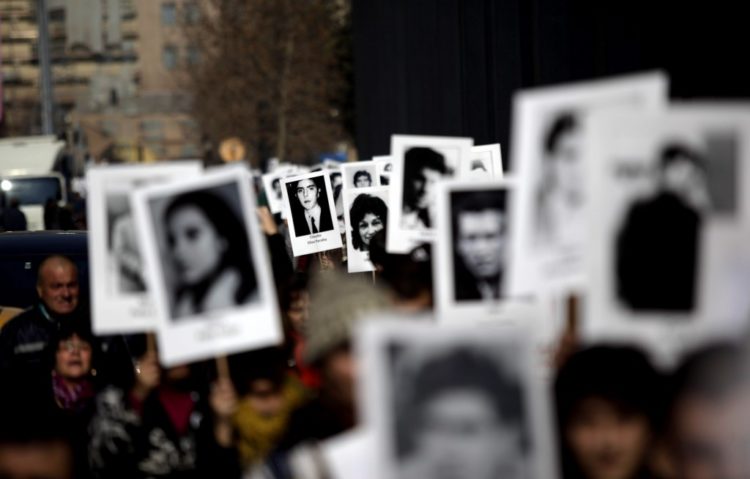
However, in 2020, the Under Secretary for Human Rights of Mexico, Encinas Rodríguez, stressed that for the first time the number of disappearances has dropped, but it still remains a scourge that seems far from over.
On this delicate issue, the journalist Mario Galeana wrote a report for the Mexican media ladobe.com entitled «The footprints that we lost in the valley», in which the situation experienced in the province of Tehuacán, in the state of Puebla, is exposed. In Tehuacán, at least 406 people have been reported missing during the last eight years. In El Ciudadano we will tell these stories in a total of three reports.
Tehuacán is a peaceful city and one of the 217 municipalities that make up the Mexican state of Puebla. It is the capital of a valley rich in history and inhabited for more than 8,000 years, where the oldest fossils of corn have been discovered, the crop that allowed human beings to settle and Mesoamerican cultures flourish, that is why it is also known as the «cradle of corn».
The ‘disappeared’ of Tehuacán
But in this case, the journalist Galeana will not talk about the beauty of Tehuacán but about a situation that worries all its inhabitants: the ‘disappeared’.
“It all began as the intermittence of a light that wavers until it is extinguished in silence. The first year eight people disappeared, the second there were 25, and with the sum of the following years they became hundreds”, begins the report on Tehuacán.
However, in the city of Tehuacán, there was no mention of missing persons for a long time. It was difficult to speak of a single thing in the largest city of a diffuse region in which the wind picks up cacti and kapok trees, mud, leaves and ivy, a desert, a valley and a jungle in its path.
But then they disappeared, and their mothers started looking for them. And in doing so, they discovered that with them, the decisive evidence to find them had also disappeared: Cristina’s folder, Karina’s video, Roxana’s phone chip.
All trace was lost in one way or another. In the hands of the ministerial agent in charge of their investigation, in the forgetfulness of an office of the State Prosecutor’s Office that was falling apart.
Then the word ‘disappearance’ became synonymous with exiled families, traffickers, accomplices and omissions, of so many other things, except justice.
Disappeared and the rise of neoliberalism
The Tehuacán Valley and the Sierra Negra comprise 21 municipalities and almost 5,000 kilometers of a geography that extends in two directions. Towards the southeast, on the border with Oaxaca, the desert and the valley of cacti where it is still possible to find on the skin of the stones the trace of insects that were extinct thousands of years ago. Towards the southwest, on the border with Veracruz, the range of gaunt mud, impregnable caves and rivers that are born at the tips of the mountains.
In the region, each extreme rests on its opposite: its towns and cities go from the humid to the dry, from the hot to the icy, from the urban to the jungle, from the possible to the impossible. The highways invariably lead to Tehuacán, the most important urban center in the region, the second most populated city in the entire state of Puebla – half a million people – and the name that was exported to the world to speak of mineral water and torture, because, in police jargon, suffocation caused by the bursting of water through the nose is known as ‘Tehuacanazo’.
Tehuacán was built on mineral springs and over time it became a city that became almost prosperous due to the development of large bottling companies, and almost chic by the celebrities who came to its spas and hotels, seduced by the healing properties they attributed to the water.
It never lost that suburban notion that turns the opening of shopping centers into great events; and later neoliberalism planted in the area the oasis of the ‘maquiladoras’ (maquila textiles) that promised gushing jobs in exchange for strenuous hours, low wages, and sewage that turned the rivers into something less than purple stains.
The word ‘disappearance’ did not exist in the city’s vocabulary, but at some point in its history it began to become everything that it already is today: in the region there is no city with a higher crime rate – 1,616 crimes per 100,000 inhabitants.
In just over eight years – from January 1, 2012 to May 31, 2020 – the Puebla Prosecutor’s Office filed complaints for the ‘disappearance’ of 406 people who were last seen in the city. They located 63% and of the rest – 150 people who were mothers or were boys or were girls or were uncles – nobody knew anything about them.

Cristina’s receipts folder
August 16, 2016 was the last day that 44-year-old Olivia Cristina Camarillo Viveros woke up in her bed. That Tuesday morning the house was quite quiet, because only she and Lucia were there, whom she would later take to cut her hair to sell and pay for her enrollment in high school. Her husband had left for the ‘maquiladora’, her oldest daughter was on her first day of work and her youngest at her grandmother Oralia’s house.
At noon, Cristina called her sister Anel, to ask her to accompany her to cut Lucia’s braids, but Anel warned her that her hairdresser would already be closed, so they agreed to go the next day. Cristina said that she had to prepare food and hung up.
While she was slicing tomatoes and heating the pan to fry a steak, Cristina received a call. It was 3 in the afternoon. She went out to the patio of her house, where the telephone reception was better, and when she hung up, she took a small grocery bag, kept her phone and the folder in which she recorded the charges and receipts she made for the Provident financial company, where she worked as a commission agent for a salary of 100 pesos a day —sometimes less, sometimes nothing—, and she addressed her daughter: «Keep splitting tomatoes, I’m going for a payment, I’ll be back soon». Cristina never returned.
When Cristina’s husband finished his day’s work at the ‘maquiladora’ and got home, what he found was a little girl with an empty stomach, a couple of half-sliced tomatoes, and a few raw steaks on the table. It was 8 p.m. and his wife’s phone had been off for several hours. He called Oralia’s house to ask if Cristina was with her, and Oralia called Anel, and Anel dialed Gloria —the oldest of her siblings—, and Gloria dialed Guadalupe —the youngest—, but they all answered the same. They had no news of Cristina.
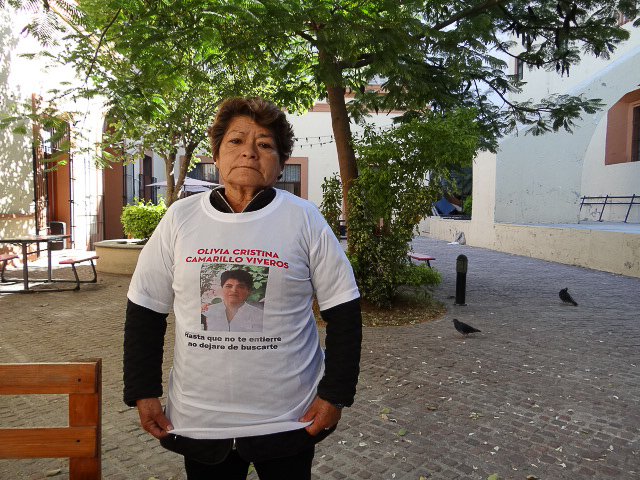
What is happening with the ‘disappeared’?
Under the soft light of the posts they began to look for her in the streets of San Nicolás Tetitzintla, the auxiliary council where they lived. They were shouting her name and some blurred faces peeked out the windows. Almost at dawn they decided to go and report her disappearance, but the Public Ministry that received them said that they had to wait at least 72 hours to do so, although the protocols for the search for disappeared women in Puebla indicate exactly the opposite: they must not waste an instant.
When Olivia Cristina’s family wanted to report her disappearance, despite the protocols for the search for missing women in Puebla, the Public Ministry told them that they had to wait 72 hours.
Time has that ‘elastic’ condition that makes it an eternity or a spark. During those three days, for Oralia and her family, time was an eternity. But now, four years later, Oralia feels that her daughter disappeared yesterday. She feels that they have only been looking for her for a few hours and she gasps, exhales painfully, defoliating the memory of her from the last day she was able to see her.
«After those 72 hours we went and 72 hours later they asked us if we could give them the number of the complaint again, because they had already lost their papers», says Oralia. We had to wait those 72 hours for them to do something … although up to now four years have passed and they have not done anything.
Anel says that she kept a diary to record the search for her sister. And the handwriting of that diary is small and precise. Sheets and sheets of inquiries that the State Attorney General’s Office (FGE) should have made, traces, clues, names, schedules, a meticulous recount of various moments.
In that diary, she described the afternoon in which someone told them that Cristina was kidnapped in a warehouse, and they went. The morning someone told them that under a cabin they would find passageways with kidnapped people, and they went again. The day someone called them to ask for money in exchange for information about Cristina. The times the phone company refused to provide the geolocation of her cell phone. The night Gloria disguised herself to look for her in the slums. The months that the financial Provident denied them the collection folder that Cristina took with her when she disappeared.
Days, months and years of bureaucracy
Oralia is in her early sixties, with a lean face and short curly hair; It is possible to find on her face the profile of Cristina, the shape of her eyes, nose and mouth. So when she wakes up and finds herself in front of the mirror, Oralia must also see her daughter. Anel is 44 —the age her sister was when she disappeared—, she is thin and the mother of two boys.
The two of them talk outside a coffee shop in the Ecological Park in Tehuacán, where water splashes in the fountains from a distance, some children play and the November wind shakes the trees. Under the filter of the stillness of this day, it is difficult to explain that five days after Cristina’s disappearance, and a few steps from this same coffee shop, another girl, Karina Yazmín Alducin Rodríguez, was seen for the last time.
While the 72-hour deadline was in place, Cristina’s family posted posters with her face all over the city. They toured San Nicolás noting the address of the surveillance cameras that could have registered her steps, but they received a slam every time they asked the owners of those cameras to give up their recordings. They took that file of addresses and photographs to Antonio Martínez Bermúdez, who a month earlier had been appointed prosecutor for the Tehuacán judicial district. He asked them for 15 days to find those responsible and put the file in his desk drawer, promising that it would be analyzed.
«I was waiting those 15 days to pass», recalls Oralia. And when we finally went, I stood there and he opened the drawer and there was the file, the photographs. He never sent it to analyze.
The investigation passed into the hands of Arturo Hernández Arvide, who at the time was an agent of the Public Ministry Specialized in Disappearance of Persons in Tehuacán, the same one who had to search for them. Her (Cristina), Karina and Roxana.
But between one and the other there was no change, and Oralia and her daughters traveled to the city of Puebla to report their inaction to the headquarters of the Prosecutor’s Office. A couple of ministerials brought them back and did what had to be done in the first hours: rebuilding the path Cristina may have taken, asking neighbors and requesting the recordings.
That happened six months later, and by then the videos from August 16, 2016 had already been deleted.
The financier Provident never agreed to release the records of the people Cristina was able to address the last time she was seen. She worked there for less than a year, but during that time she was attacked several times by the people she had to collect from, and they even sent threats to her boss through her. Seven days after her disappearance, a financial worker was murdered in a robbery in which they robbed her of 2,000 pesos: commission agents like Cristina and like her did not carry large sums of money.
-Why didn’t the Prosecutor’s Office investigate the financier? When my daughter got lost, we went to talk to the manager and he told us: «Ma’am, we can’t give you any support, because Dona Cristina was just another worker». The financier washed its hands and they never commented on my daughter, or why they killed her partner. My question has always been that: Who is going to investigate the financier?
